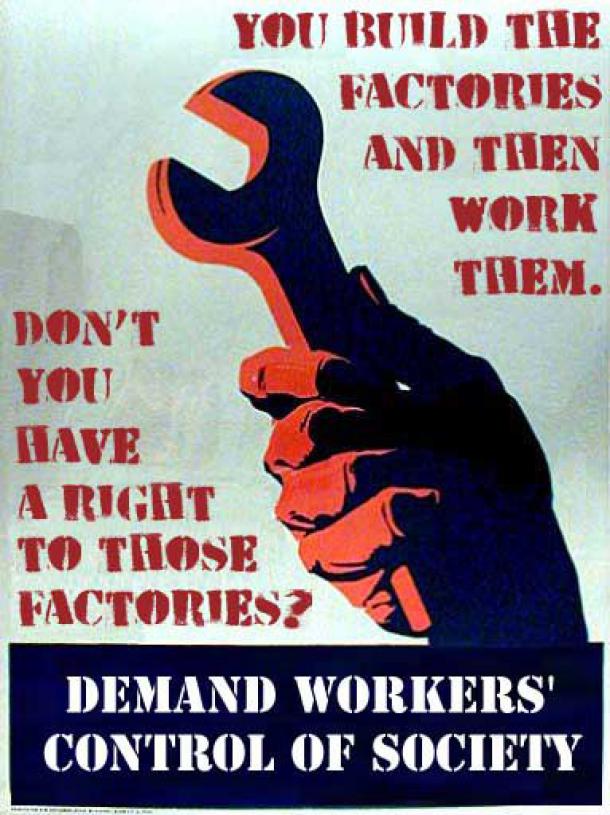Resisting redundancy and recession: appraising the tactic of occupation
In regard to workplace occupations, the decision relates to workers’ assessments of their situation and their expectations about whether this will bring useful leverage.
In times of recession and restructuring, the occupation or sit-in tactic is potentially a powerful tool when workers are faced with redundancy because it provides leverage that strikes often cannot. Yet, since late 2007 when the global downturn began, we have witnessed very few examples of occupation – certainly far fewer than might have been expected given the depth and extent of recession.
So to date the numerical roll call of occupations has been: Australia (2), Britain (7), Canada (4), Eire (7), France (28) and the US (1). It is worth bearing in mind the relative context of the size of the labour forces of each of these countries. Respectively, these are 11m, 31m, 18m, 2m, 28m, and 153m.
We can presuppose the foundations for occupation are aspects of consciousness, primarily, anger and organisation. Anger at being at the end of the line with nowhere to go and wanting to do something about this: union organisation allowing something collectively to be done about this. This contrasts with other facets of worker consciousness such as fatalism and resignation that nothing can be done, and that the workers themselves have no power of remedy (even with union organisation).
But this is insufficient to explain the action compared to the inaction. To flesh out the issues, we need to look at the main characteristics of the stimulus to the occupations. These are:
- Redundancy of a high percentage of workers (often with closure)
- Timing of closure announcement: immediate notice of immediate redundancy and closure
- No severance pay and loss of pension rights as a result of bankruptcy
- Unionised workforces
- Previous high profile examples of occupation in recent times.
Taking these in turn, the fully collectivised nature of the redundancy helps create a critical mass while the immediacy of redundancy provides for no period of consultation or dialogue with the employer and, thus, a greater shock to the system. This grave sense of procedural injustice is heightened by the substantial justice of no compensation and loss of deferred wages.
But this explanation provides only limited illumination. First, not all occupations had all these features. The only common one was the first. Indeed, in some cases workers became unionised in the process of an occupation. Furthermore, where occupation in both absolute and relative has been sparsest – the US – the absence of any preceding occupations may help account for this. By contrast, in the other countries the precedent of occupation in the last five or so years existed. And, there were many cases where all the features were present but no occupation was engaged in. This suggests that other factors were at play.
So the key material factors are the labour market situation and terms of redundancy. Some workers will believe that they have better or worse chances of finding other employment depending on the state of the local labour market. Across the six economies, unemployment levels vary widely, with Australia being just 5.7%. However, it is not as simple as saying that workers with no sense of alternative employment are more likely to think of occupation than those that do for other factors have a bearing.
Nonetheless, it can be suggested that this sense of no alternative employment is a necessary – without being sufficient – factor. That said, the terms of redundancy have an important bearing on this calculation for payoffs of certain sizes can blunt or delay the impact of redundancy. But again, there are still cases where reasonable redundancy terms have not provided a bulwark against occupation.
The article has sought to explore explanation for the phenomenon of occupation. In doing so, it has gone beyond the ultra-left tendency of some to shout from the sidelines, ‘Such and such workers have occupied their workplace – you should do it too, you can do it too’. This approach is mistaken because it fails to appreciate the complexity of social processes involving worker agency as well as the material foundations of concrete circumstances. This complexity relates to workers’ assessments of their situation and their expectations about whether occupation will bring useful leverage in terms of a cost/benefit calculation.
The starkest examples of our lack of understanding of why some workers occupy and other do not can be found in the cases of Visteon and Thomas Cook. In both cases, it appears that the crucial spur was that one workplace was occupied first, so setting a precedent for the others. Yet we do not know why the occupations happened in particular workplaces first and not in others.
We need to put our thinking caps on here if we are to be able to understand and then assist workers in struggling against redundancy and recession.
See also:
Gall, G. 2010, 'Resisting Recession and Redundancy: Contemporary Worker Occupation in Britain', WorkingUSA, vol. 13, no. 1 March, pp. 107-132.
Gall, G. 2011, 'Contemporary workplace occupations in Britain: Motivations, stimuli, dynamics and outcomes', Employee Relations, vol. 33, no. 6.





